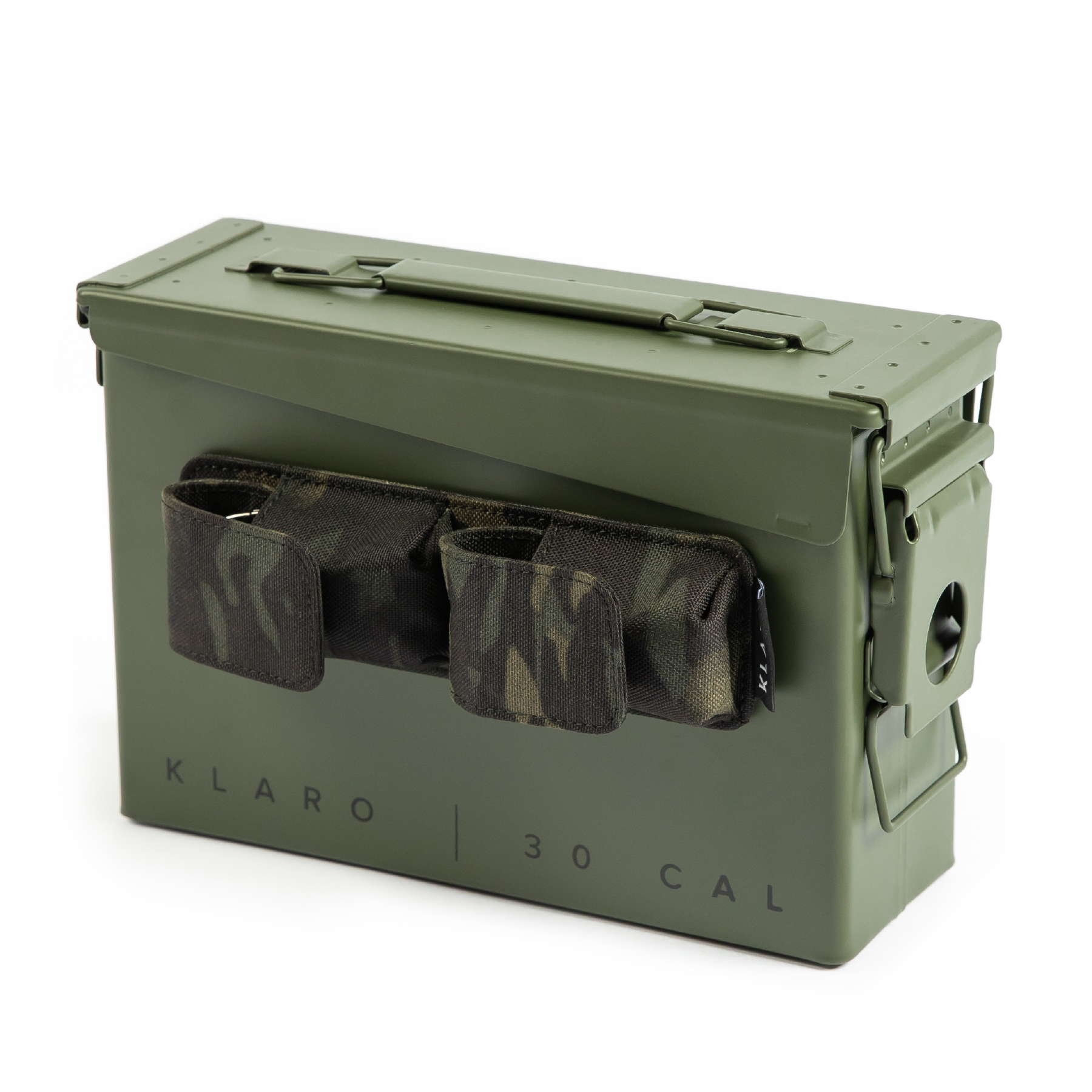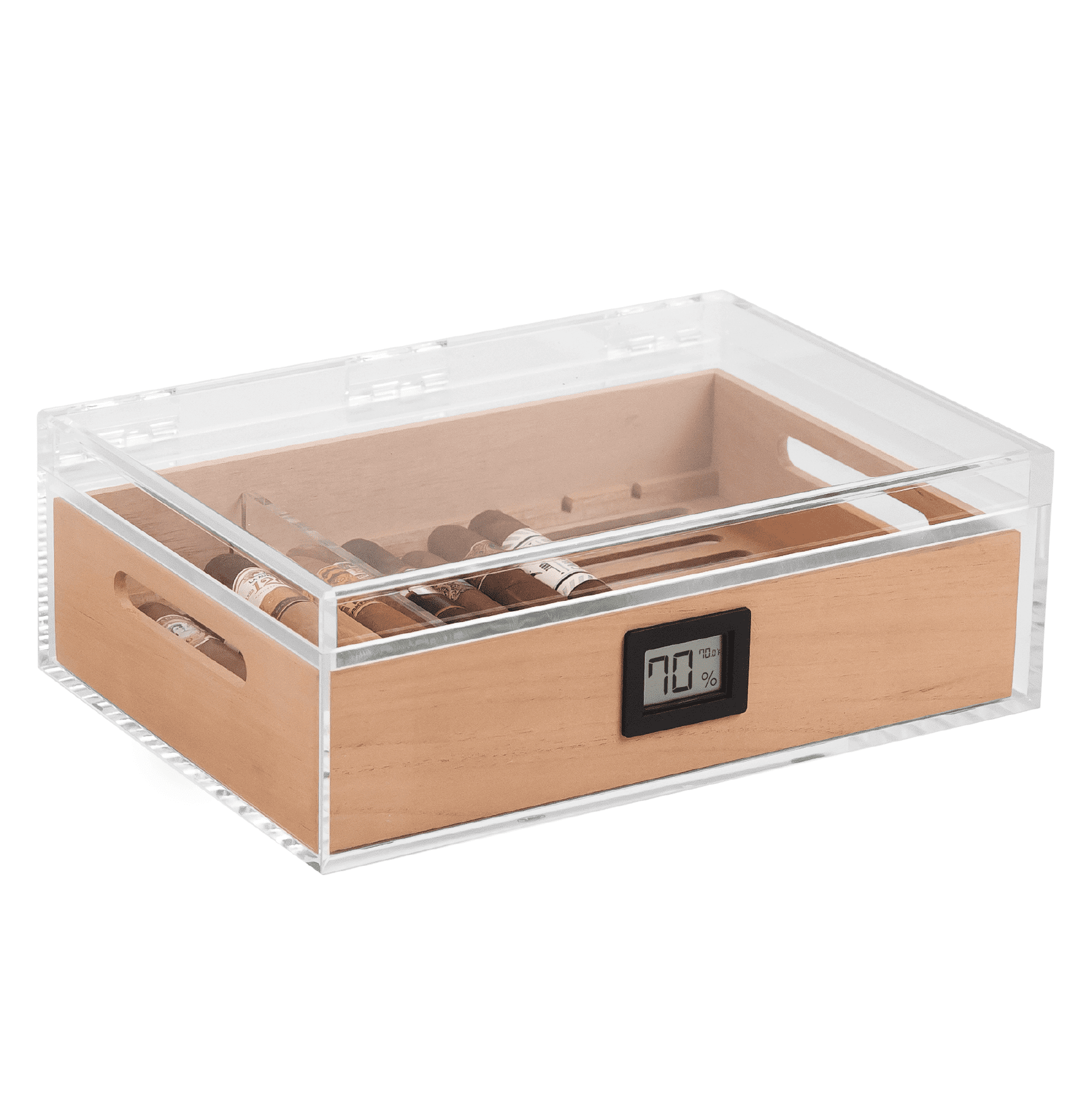
Aggressive seasonal humidity fluctuations can dizzy your hygrometer and push your humidor’s wood components to their moisture limits. When humidity shifts wildly, make sure you understand what’s happening to your humidor and its environment so you can still keep your cigars healthy and protected.
With a quality humidor, you shouldn’t have too much to worry about. But if you live in a climate where humidity shoots up in the summer and plummets in the winter–and if your habits as a smoker fluctuate with the temperature, too–it’s best to keep your eye on the hygrometer, practice a few good habits, and know what it looks like if your humidor is struggling to keep up.
When Should I Be Concerned?
Those of us who live in locales where humidity levels ping-pong each winter and summer dread those certain summer days when stepping outside is like walking into an instant steam room. If you know, you know–and smokers living in these locations need to be aware that the humidity outside can easily affect humidity inside.
A humidor is a tool that helps protect your cigars from abrasive outside humidity levels, but, unobserved, it can buckle under the strain and struggle to maintain the goldilocks relative humidity (RH) ideal for cigars. Smokers in more temperate geographies have to worry less. But if the mugginess outside affects how you dress and what time of day you leave the house, you might want to investigate how humidity could be affecting your humidor setup.
Note that hygrometers for humidors measure the internal RH. But how humid is your home? We recommend buying a home hygrometer so you can keep tabs on your home’s humidity levels during the summer. Consider the shock your humidor experiences each time you open it if the outside humidity levels are soaring. It’s a surefire way to strain your humidor and the cigars inside.
For controlling the humidity levels inside your home:
- Running your AC will decrease the humidity levels as opposed to fans, which won’t.
- Consider the use of a dehumidifier to get a base level RH.
- Regulate open windows as much as possible.
And when it comes to how often you open your humidor, think economically. The more you open your humidor, the more it’s exposed to the outside air. And, in the summer, that could mean big differences in temperature and moisture.
Can You Trust Your Humidor?
Before anything else, evaluate your humidor to make sure it’s capable of responding to significant humidity fluctuations. Use the salt test to calibrate your hygrometer, use the dollar bill test to check the seal on your humidor, and do some experimenting to learn how your humidor responds to added cigars. You also need to understand your humidor’s humidifier system and have a good schedule in place for refilling the humidifier with solution, switching out beads, gells, or crystals, or changing out humidity packs, if that’s your thing. Your frequency may change during more humid months, so it’s important you keep track of how often you would typically change these out.
All Klaro humidors come equipped with a self-regulating Hydro system that includes a Hydro tray to be filled with solution as recommended. This is designed to ensure proper humidification levels no matter the relative humidity outside the humidor box.
And that’s really the primary takeaway: can your humidor maintain consistency even when exposed to outside fluctuations in humidity? Thankfully, Klaro humidors also include significant thicknesses of Spanish cedar in the design of the humidor’s interior, and it can help the humidor adjust to the desired humidification levels. Your humidor will get exposed to higher humidity levels when opened, but if you have Spanish cedar inside, it should be able to regulate those levels on the interior.

Are You a Fair-weather Smoker?
Speaking of opening your humidor… How often you smoke–and during what season–is important to keep in mind because you might need to complete some necessary Spring cleaning prior to a summer of smoking. There’s nothing wrong with being a fair-weather smoker, but heed some advised tips as you begin to stock your humidor after a uneventful winter.
Spring Cleaning
Empty your humidor and dispose of any old, forlorn cigars, giving them a once-over first for signs of tobacco beetles. Take a can of compressed air to the box and inspect any remaining grit to guarantee it’s not mold, but refrain from wiping any of the wood with a wetted cloth, because this could cause warping.
Season Your Humidor
If you haven’t been smoking recently, you probably haven’t seasoned your humidor recently either, so add that to the list. Each humidor is different, but the goal of humidor seasoning is to saturate the cedar with enough moisture so that it can respond appropriately to humidity changes and adjust accordingly. You can find specific seasoning steps here.
Stock with Your Cigars in Mind
As you stock your humidor with cigars for the summer, keep your milds separated from your bolds, and don’t ever risk including any flavored tobacco in your humidor. Oils will transfer from one cigar to the next, and you want to avoid flavor from one cigar influencing others. Also remember not to overcrowd your humidor; about 25% of the space should be left open.
Geography Matters
No need to pull out the maps, discuss weather patterns, or identify your town’s latitudinal relation to the Equator. But there’s a close connection to where you live and how your humidor performs. There are really just two elements to keep in mind: elevation and humidity.
Elevation matters because, the higher you go, the thinner the air and the less moisture it holds. Not only are your cigars at risk of drying out, but the wood of your humidor can be affected too, causing it to contract and potentially lose its seal. Again, this is the importance of a quality humidor and humidifier. In higher elevations, a good humidifier and humidor can still maintain a well-humidified space, even after opening the humidor and exposing it to the drier air.
Tobacco Nerd Note: Elevation causes cigars to dry out–and in these scenarios you want to avoid exposing your humidor to the HVAC system because it reduces humidity. In the summer when it’s more humid outside, move your humidor back to a location that’s moderated by your HVAC.
Where Do You Keep Your Humidor?
There are two risks associated with storing cigars during hot, humid summer months–humidity levels and temperature. All humidors are designed to regulate humidity (though we’ve discussed why you should still take precautions). But not all humidors are designed to control the temperature your cigars are exposed to, and that’s a potential problem. If you use a frigador or a humidor refrigerator, you won’t fight high temperatures. If not, well…
Where you store your humidor matters–and you want to avoid exposure to sunlight from windows or doors because this can heat up the inside of your humidor and cause damage to your cigars. Similarly, you don’t want to store your humidor near an AC unit where it’s directly exposed to cold airflow.
On that note, how do you cool your house? If you live in a part of the country that gets cold and night but warm during the day, it’s common practice to open the windows at night and close them in the morning to trap the cool air. But keep in mind you’re inviting a lot of humidity into your household, which can directly affect the humidor.
Parting Puffs
Over-humidification is your biggest risk during the summer months, but you can rest assured by keeping tabs on your humidor and its humidity levels regularly. If you struggle with higher humidity, consider adding Spanish cedar planks to the humidor during those summer months. Check out our guide to effectively lower the humidity of your humidor.If you’re still struggling with humidity levels, it may be time to recognize your current humidor isn’t up to snuff. Yes, summers get humid. But you shouldn’t have to walk on eggshells all summer long to ensure your cigars are safe. Peruse our line of Klaro humidors and, should you be in the market, know they are designed with reliability in mind. Happy smoking.















